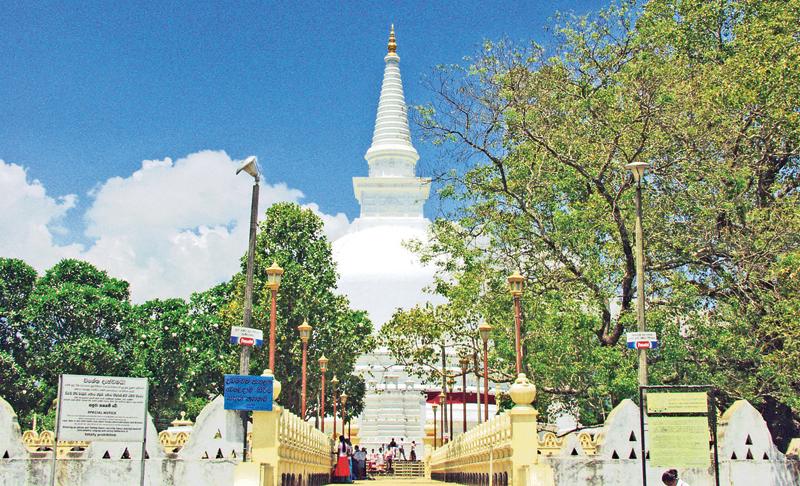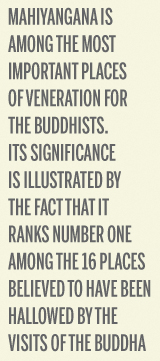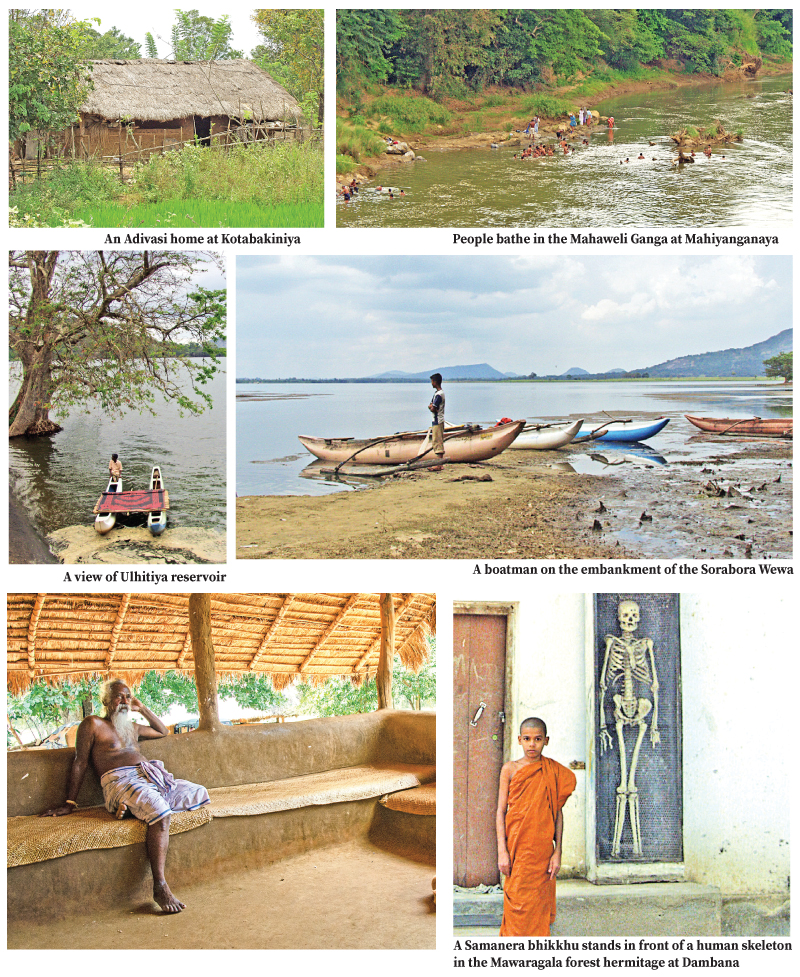
Perhaps it is because I grew up in a village surrounded by mountains, that I am enticed by them. I visited Mahiyanganaya for the first time four decades ago with my mother on a pilgrimage. I had a camera and I was fascinated by the Adivasi Aththo (Veddhas), especially, the elders with long white cotton beards who flocked to Mahiyangana Temple to entertain the pilgrims, performing ritual and reciting stanzas.
Although the picture was not clear, I still remember the shot I captured of an elderly Vedda with a long beard performing his ritual moving his small axe and singing their customary melodious song.
Charming beauty
 Recently I visited Mahiyanganaya again with my wife and two sons after the lockdown of the Covid-19 pandemic.
Recently I visited Mahiyanganaya again with my wife and two sons after the lockdown of the Covid-19 pandemic.
We left Ratnapura early in the morning along the Bandarawela-Badulla- Migahakivla highway. Reaching Mahiyanganaya, we spotted the placid reservoir, the serene Loggal Oya displaying its charming beauty. It was a smooth drive now as it was 40 years ago. A new, wider carpeted road has been built and is used by travellers and heavy truck drivers to transport goods and fuel.
Our first stop, the historic Mahiyangana dagoba on the banks of the Mahaweli Ganga, is one of the classic Buddhist shrines in Sri Lanka, held in great veneration, as it was sanctified by a visit of the Buddha. The dagoba is built over a hair relic of the Buddha given to God Saman, a guardian deity of Sri Lanka whose shrine is also located here.
Mahiyangana is among the most important places of veneration for the Buddhists. Its significance is illustrated by the fact that it ranks number one among the 16 places believed to have been hallowed by the visits of the Buddha.
A serene forest hermitage in a rocky outcrop called Mawaragala lies in the vicinity of Dambana, 20 kilometres from the Mahiyanganaya town. It is haven to a small group of Samanera bhikkhus who practise meditation and live a monastic life. Children from Vedda families too have been ordained. For alms, they called Pindapatha every day. The rocky caves and its fascinating landscape were portrayed in Suriya Arana a popular children’s film which was shot in Mawaragala.
Mahaweli program
A must place to visit in Mahiyangana is Kotabakiniya in Dambana, an ancestral village of the Adivasi community, about 20 kilometres from Mahiyanganaya. Under the Mahaweli Development Program, the Adivasi community were evacuated from their ancestral villages and given farming lands in and around Dambana, where they make their living as farmers, having given up the traditional hunting.
In the deep forest of Dambana, is a cluster of buildings built with clay, one of which houses a proud historical monument of the Adhiwasi people and its chieftain Tissahamy. It contains rare photographs of the ancient Adhiwasi people and the items they used in the past which are exhibited to visitors.
The Mahaweli Ganga rises from the Horton Plains and drops down to the Hatton plateau. It gathers its strength from many tributaries and rivulets as it rolls down the mountains. From Minipe, the river flows into the plain beside the historic Mahiyangana dagoba. The river having taken a straight course from Minipe now swerves to the right. Just beyond the turn, the river encircles the island of Kalinga.
Engineering masterpiece
Beyond Minipe, along the main river, is Mahiyanganaya and to the North of Mahiyanganaya is the ancient Sorabora Wewa, a unique engineering masterpiece built by a giant called Bulatha during the reign of King Dutugemunu. The Wewa was created by damming a small tributary of the Mahaweli. A few people from the village make their livelihood on the bank of the Sorabora Wewa rowing visitors around the Wewa by canoe.
About half an hour’s drive from the Mahiyanganaya town is the Sorabora Wewa, a popular pit stop among pilgrims, and travellers. The place had been deserted due to the Covid-19 pandemic and some vendors had now returned to their spots to engage in their usual businesses. But the holidaymakers’ absence was still felt.
The Department of Archaeology dates this ancient engineering feat to 120 BC and adds a note on its folklore. Bulatha, a name derived or inspired from betel chewing, is said to be a giant during the time of King Dutugemunu who built the original dam to harness water along with a rock hewn anicut that incidentally is still preserved and in use today. A fact-list signpost revealed its many stupendous dimensions including that it feeds 3,000 acres of cultivation lands.
Settlements
The Ulhitiya-Ratkinda reservoir was constructed under the Mahaweli Development Program in Henanigala at System-C, 30 kilometres from Mahiyanganaya where most of the Adhiwasi community have been given settlements. The trans-basin canal has conveyed the Mahaweli waters to the Ulhitiya reservoir and then to the Maduru Oya reservoir via a link tunnel.
This reservoir benefits settlers in Henanigala in their agriculture and fishing industry.
From ancient times the entire Mahaweli plain from Mahiyanganaya to the mouth of the sea at Trincomalee was irrigated by the waters of the Mahaweli Ganga which flows across Mahiyanganaya.
A part of the North Central Province called System-C, under the Mahaweli Program, has already been supplied with the Mahaweli waters. Extents of 71,000 acres of lands around Mahiyangana have been made available for paddy cultivation.
As we approached a reservoir built in a wide valley, the sunlight at dusk turned the mountains behind the reservoir into beige and brown. Standing on the bank of the reservoir, I saw the sun set aflame the trough formed by the slopes of two mountains. I tried to capture it but it was too grand a spectacle for a digital device to do justice to it.
Mahiyangana which includes Bintenna is a popular place of Buddhist worship and a tourist site, devotees and visitors making it a regular spot in their trip or vandanagamana.

